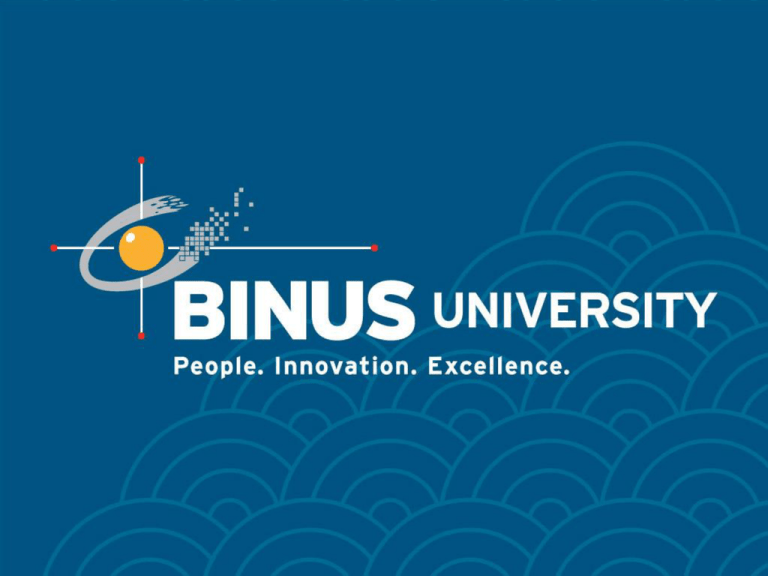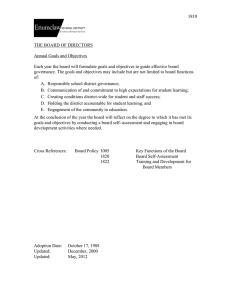Document 15063103
advertisement

Matakuliah Tahun : M0734-Business Process Reenginering : 2010 The Implementation of BPR Pertemuan 10 Continuous Improvement Phase : Why ? How ? Outputs Risks Continuous Improvement Phase 3 Why ?sustainability is not worth Process improvements without the effort, as the improved practices quickly fade away as the business grows and changes To ensure the continuity of process improvement and make it part of business-as-usual The considerable investment made in any project must be maintained and enhanced over time Processes must continuously be improved and redesigned otherwise the organization will be performing in sub-optimal fashion We had improvement programs. But the real difference came when we decided it was no longer a program, it was a business strategy. Stephen Schwartz, IBM 4 How ? 5 Step 1 : Fine-tune, Embed and Reward Continuous Improvement Continuous improvement – mechanism for continual process optimization and management, it needs to address: • • • • What are the objectives of continuous improvement? What is in the scope of continuous improvement and what is out of scope? What are the roles and responsibilities regarding continuous improvement? How are people rewarded for their contribution towards a continuous improvement environment? Processes need to be socialized, sufficient support and guide during initial stages of new processes are essential to ensure continuous improvement within the organization • Use Intranet to publish the new processes • Keep the processes up-to-date • Adopt user centric approach for process publication on the internet Reward initiatives as well as results for process improvements • Rewards can be in the form of training, promotion and financial compensation 6 Step 2 : Process Governance Governance • The managing, controlling and reporting of processes within an organization Impact of Governance on BPM • Impact on the processes refers to the increasing rules and regulations applying to processes • Impact on the management of the business processes refers to the fact that governance forces organization to take all the necessary measures to ensure that the processes are managed and under control, and that they are properly administered Considerations • • • • • • Keep measuring Divide the leadership Almost any governance structure is good Encourage the desired behavior People are allergic to excessive control Keep it simple 7 Step 3 : Monitor Continuous Improvement Measurements for monitoring • Customer, partner and employee satisfaction with the internal BPM programs and services (via a survey) • The number of times process models are consulted • The number of complaints from people that the process models are not up to date or correct • The number of process model descriptions that have not been reviewed or modified in the agreed time period • The turnover of staff (internal and external) • The percentage of projects that have achieved their targets and were completed on time and on budget • The availability of process models • The turn-around time for process modeling “Main emphasis is now on the correct execution of the processes.” 8 Step 4 : Maintain Process Models Register the change (for example, who is requested the change) Determine the type of change and the drivers for change Prioritize changes Determine impact assessment Obtain approval for the change Plan realization of the change Implement change Review implementation of the change 9 Outputs Mechanisms to manage business processes, and identify and realize opportunities for process improvements Managed and improved processes 10 Risks Risks Mitigation Strategy No one takes ownership of the management of the processes Discuss with senior management, as ownership has already been – this is the most critical success factor in BPM People are not following the new way Find out why people are not working in the new way and address the motivated, ‘sell’ the benefits to them. If people have forgotten how to additional training and guidance Processes are not updated Ensure that people are using the process models and can detect any ensure that processes are reviewed on a regular basis Not further process improvements initiated from employees and line Encourage employee and line management to provide suggestions. suggestions, explain why certain suggestions are not viable, and employees Difficulty in keeping up with the pace governance requirements are Approach governance holistically, rather than piece by piece 11 Summary 12 Summary Business Process Management is a management discipline that requires end-toend view and improvement of the organization processes. It is not just a technology, it is an integral part of management which extends from modeling implementation and execution up to monitoring and continuous improvement Business Process Management Implementation Framework provide step-by-step framework to implement Business Process Management in your organization. The framework stretches from initial foundations required to execution, monitoring and continuously maintaining success and improvement in your business process management by integrating your improve process into business-as-usual activities When implemented correctly, Business Process Management will deliver a number of benefits towards your business including • • • • • • • Improves Business Process Efficiency and Effectiveness Increased Customer Loyalty as the result of better and more timely service Increased competitiveness Better process visibility Improved agility Enhanced Simplicity Continuous Improvement within your organization Business Process Management can be aligned with other technology initiatives within your organization, like Service Oriented Architecture, Enterprise Content Management and Enterprise Portal to enable and Integrated Enterprise Ecosystem 13 that integrated automated and manual processes within the organization About Meyliana • Seorang praktisi di bidang business process management and application development • Saat ini menjabat sebagai Corporate Business Development Manager di Bina Nusantara • Juga sebagai dosen S1 dan S2 di PS Sistem Informasi Fakultas Ilmu Komputer Universitas Bina Nusantara • Email : meyliana@binus.edu dan m3yl14n4@yahoo.com 14


